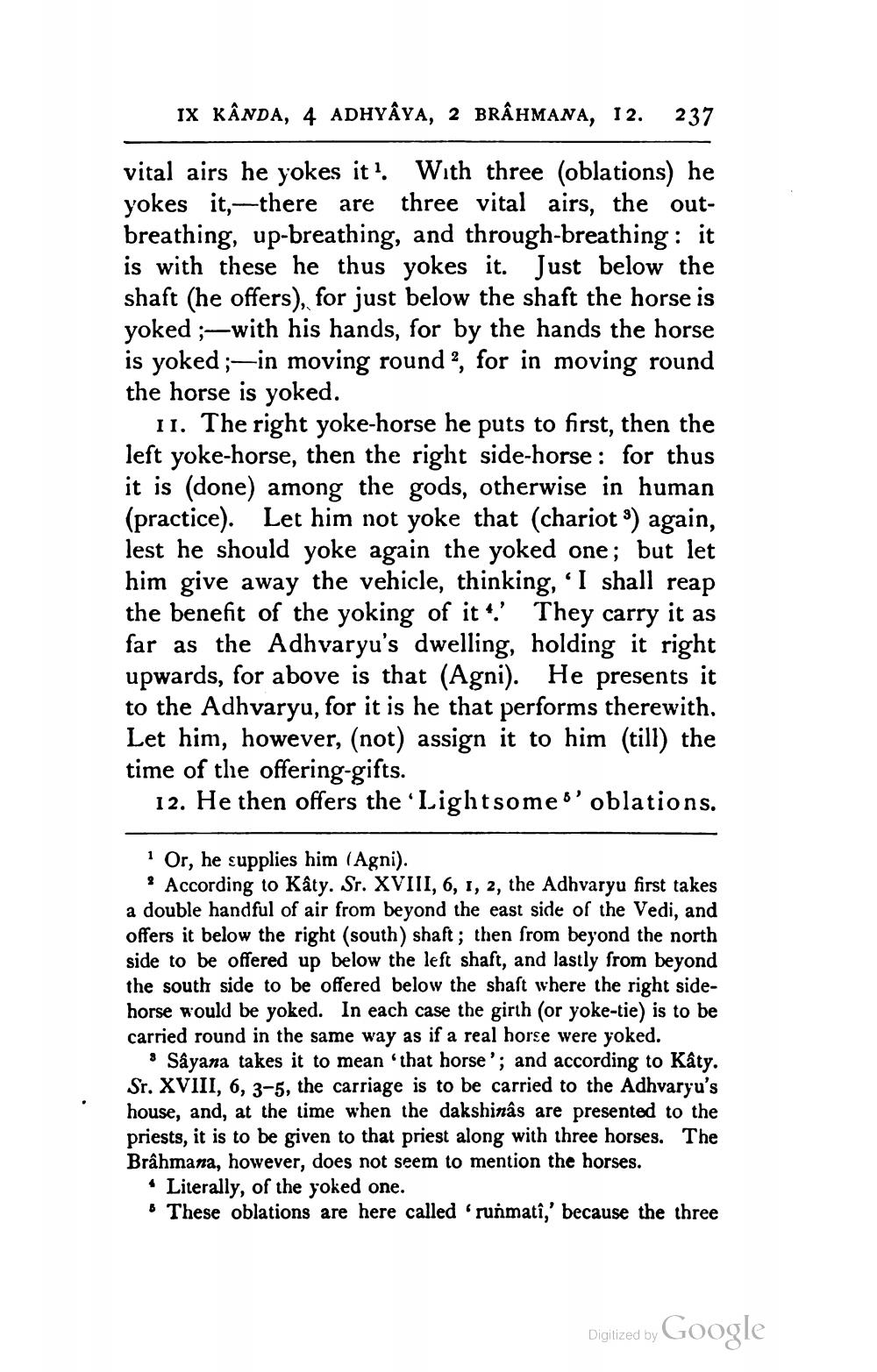________________
IX KÂNDA, 4 ADHYAYA, 2 BRÂHMANA, 12. 237
vital airs he yokes it! With three (oblations) he yokes it,—there are three vital airs, the outbreathing, up-breathing, and through-breathing : it is with these he thus yokes it. Just below the shaft (he offers), for just below the shaft the horse is yoked ;-with his hands, for by the hands the horse is yoked ;-in moving round ?, for in moving round the horse is yoked.
11. The right yoke-horse he puts to first, then the left yoke-horse, then the right side-horse: for thus it is (done) among the gods, otherwise in human (practice). Let him not yoke that (chariot 9) again, lest he should yoke again the yoked one; but let him give away the vehicle, thinking, 'I shall reap the benefit of the yoking of it.' They carry it as far as the Adhvaryu's dwelling, holding it right upwards, for above is that (Agni). He presents it to the Adhvaryu, for it is he that performs therewith. Let him, however, (not) assign it to him (till) the time of the offering-gifts.
12. He then offers the 'Lightsome l'oblations.
1 Or, he supplies him (Agni).
? According to Kâty. Sr. XVIII, 6, 1, 2, the Adhvaryu first takes a double handful of air from beyond the east side of the Vedi, and offers it below the right (south) shaft; then from beyond the north side to be offered up below the left shaft, and lastly from beyond the south side to be offered below the shaft where the right sidehorse would be yoked. In each case the girth (or yoke-tie) is to be carried round in the same way as if a real horse were yoked.
Sayana takes it to mean that horse'; and according to Kâty. Sr. XVIII, 6, 3-5, the carriage is to be carried to the Adhvaryu's house, and, at the time when the dakshinâs are presented to the priests, it is to be given to that priest along with three horses. The Brâhmana, however, does not seem to mention the horses.
• Literally, of the yoked one. * These oblations are here called 'runmati,' because the three
Digitized by Google




